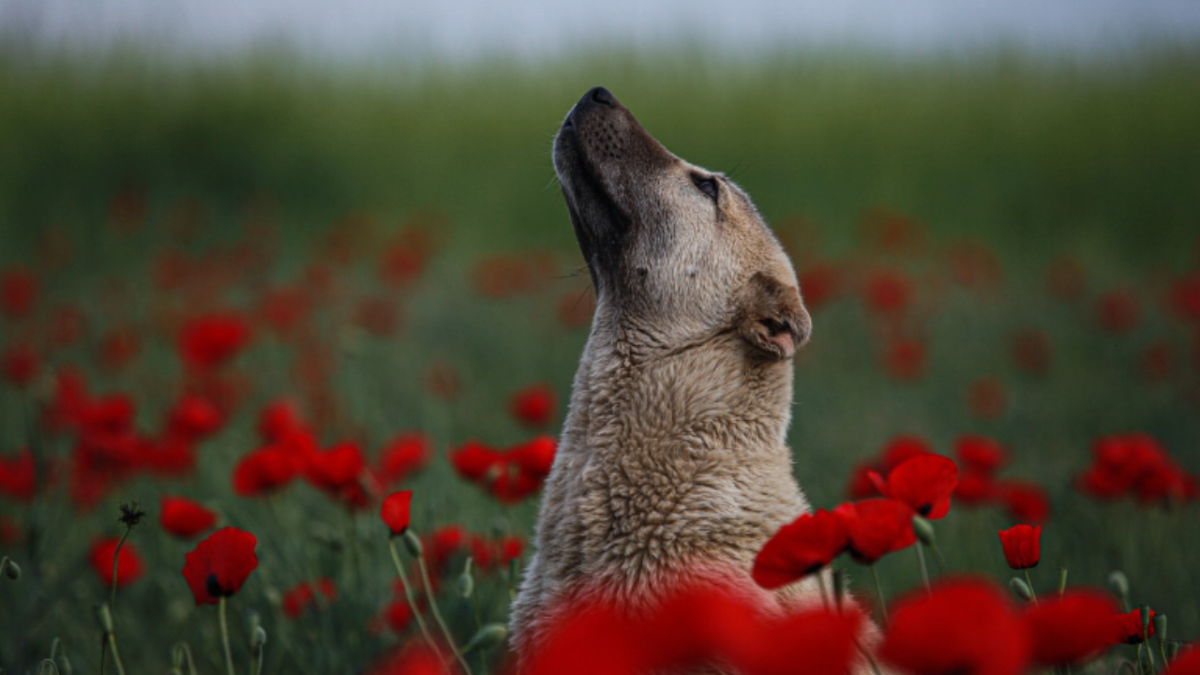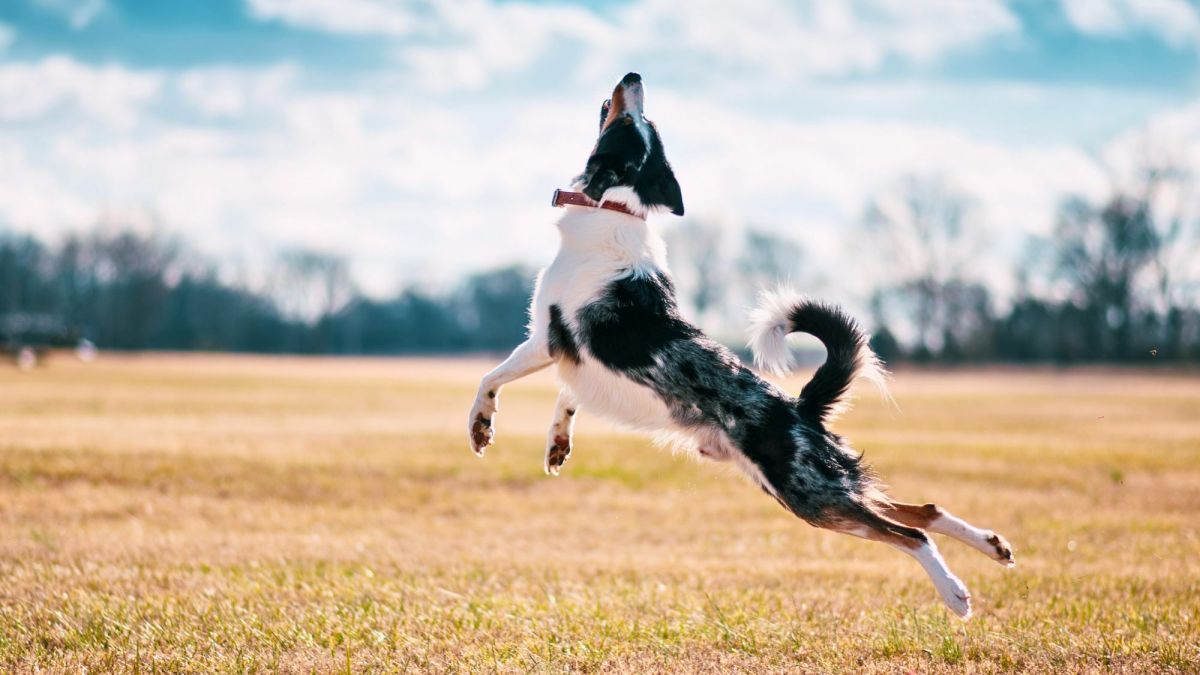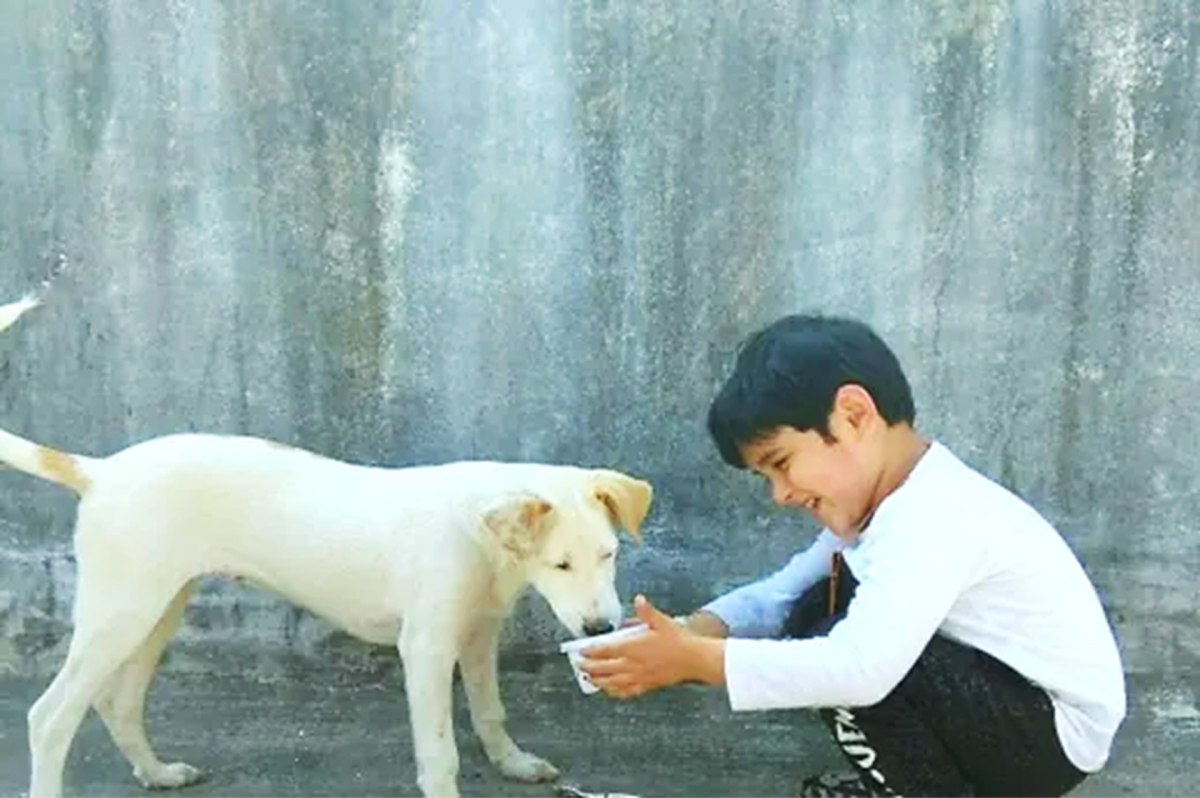Communication In Domestic Pets
I'm sure that a lot more communication goes on between our pets then we currently know how to interpret, but there are some communication types we can recognise and feel reasonably confident of interpreting correctly. Often we can tell that the animal doing the behaviour is communicating because the animal on the receiving end of the signal will respond. For example when a dog performs a play bow to another dog (the signal receiver), the receiver will either accept by returning a playful move or reject the offer of play by turning away or snarling.
Visual Communication
Body Language
The play bow in dogs - the dog lowers its front end and sticks its bottom in the air signalling a desire to play and indicating that all of its following moves, will be part of the game so shouldn't be taken seriously.
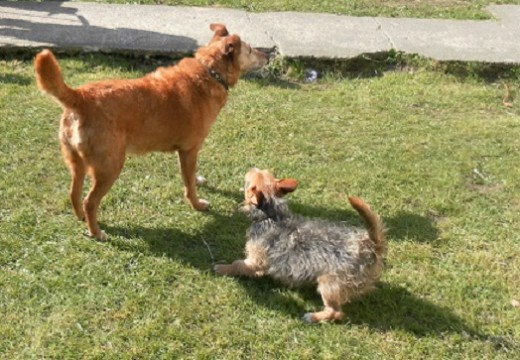
Submissive pose in dogs - A submissive dog will pull back its ears and lower its body and tail. They may urinate at the same time or roll over on to their back. The pose has the effect of making them look non threatening and vulnerable to reduce the likelihood of the other dog or dogs being aggressive towards them.
The finger waggle in red eared slider terrapins or turtles - a male red eared slider turtle will face the female whilst swimming and flutter his front claws towards her face to attract her. It may be partly tactile communication too.
Visual Communication
Plumage and Colour
Colour change in Yemen (or veiled) chameleons - Most people know that chameleons can change their colour to match with natural backgrounds. Just as interesting are the colour changes they can make to communicate - for example reddening to demonstrate that they are a strong male and prepared to defend their territory.
Plumage in male Peafowl - Not many of us have the room to keep peafowl, but everyone knows how showy the peacock's tail is and will have witnessed the peacock strutting around with his tail fanned out shimmering it at females to try to impress them.
Plumage and beak colour in male Zebra finches - like many male bird species, the male zebra finch has more vibrant plumage then the female and also a redder beak. The condition and depth of colouration communicates to other males that he is a prime specimen and advertises him to females as being genetically successful.
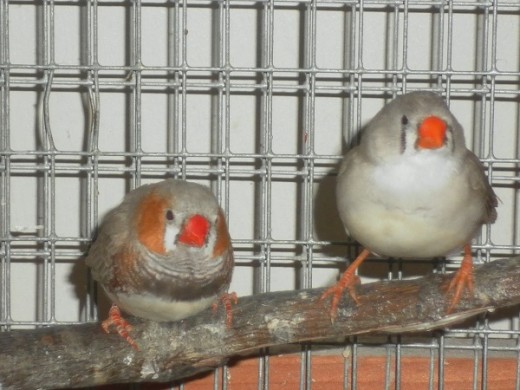
Sound Communication
This can be vocal produced through the mouth or beak, but may be produced by some other means such as rabbits thumping their hind feet on the ground to warn of potential danger.
Sound communication between our pets which we tend to miss out on are sounds above our hearing range (above 20 KHz) which can be detected using an ultrasonic microphone and converted in to a frequency of sound audible to humans.
Cockatiel Song - male cockatiels have a rather tuneless, but very earnest song as you can hear in the video clip (apologies for the poor picture quality - he likes to sing before the sun is properly up!). As with most bird song this serves to impress the females and demonstrate fitness to other cockatiels. Cockatiels can mimic sounds so will incorporate other bird's songs in to their repertoire.
Pet Cockatiel Singing
Dog Growl - this is a low sound warning the other dog or animal approaching to keep away or risk being snapped at or bitten. Cats use a similar low sound as a warning, often accompanied by a visual cue of a wagging tail.
Cat Hiss - if the warning growl is ignored by the approaching animal a cat may follow up an explosive hiss and swipe with the claws. The hiss is a universally recognised warning sound associated with snakes which may well be why in can be effective in deterring other species which try to approach a cat.
Rat Giggle - research by Panksepp and Burgdorf 2003 has shown that pet rats produce an ultrasound 'giggle' (approx 50KHz) when tickled by a human and also giggle when playing with other rats. Communicating pleasure to other rats in this way should result in more of the pleasurable stimulus occurring - extending the fun.
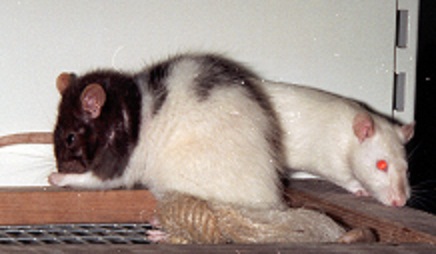
Communication by Touch
Touch, especially grooming each other, is important to many of our pet animals.
Cats grooming each other - this can reinforce bonds between individuals and seems comforting for both the groomer and the animal being groomed. Sometimes a touch can be interpreted as an animal seeking reassurance from another. In the picture below, Tilly tabby was making friendly approaches to Spirit, sniffing her ear and gently nudging the side of her head.
Most social animals such as dogs, rabbits and cockatiels will groom other members of their group
Stallions nipping -Touch can be used to signal aggression - after all a bite is technically touch! A stallion will sometimes nip his mares communicating that they need to move away from a threat.
Dogs chin resting - a dominant dog may rest its chin on the shoulder or back of another dog to demonstrate its superior position.
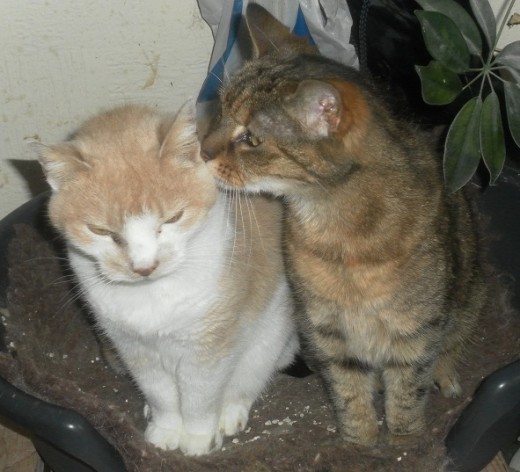
Scent Communication
We must miss an awful lot of scent communication with our inferior human noses. Yes we can smell dog urine, but we have no idea whether it was produced by Stanley the neutered Labrador from down the road or Tessa the in heat pug from the next village.
Pheromones are linked to scent communication. They are chemical messages decoded my special receptors in an animal's nostrils.
Mare sex pheromones - You may have seen pet ponies raise their heads back, draw back their lips and flare their nostrils rather like they are laughing. This is known as the 'flehman' response and is believed to help equines sample pheromones, such as those given off by a mare in heat, more effectively. The mare's sex pheromones communicate to the male that she will be receptive to mating.
Female red sided garter snake sex pheromones - again this is a pheromone used by female garter snakes to communicate readiness to mate. However to complicate matters some garter snake males mimic the female sex pheromone and end up beneath a mound of males eager for some mating action. Rick Shine (Science News Nov 2001) proposes that it is weaker males, who haven't warmed up enough, who produce the mimicking pheromone because the heat resulting from being in the midst of ardent males will be beneficial to them.
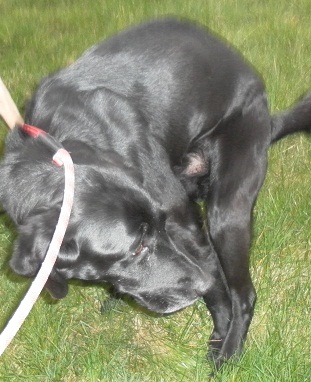
Unfamiliar Methods of Communication
Some more unusual pets communicate in ways that humans are very unfamiliar with. For example, I have kept long nosed elephant fish - Gnathonemus petersi which scientists have discovered communicate by using weak electrical charges along their bodies.
Claims have been made that dogs are capable of extrasensory perception (esp) and communicating psychically with their owners. Scientific experiments tend to disprove this such as Richard Wiseman's experiment detailed in 'The Truth About Dogs' by Stephen Budiansky. What is likely is that our dogs and other pets are capable of communicating by means which we can't perceive but which will become scientifically explainable. Ultrasound - communication by sonar is an example of a communication method which we used to have no knowledge of as we had no means of hearing it with our relatively insensitve ears.
Communication in Pets
Communication Type
| Examples in Dogs
| Examples in Other Animals
|
|---|---|---|
Visual
| Body language such as the play bow
| Colourful plumage in males of species like the zebra finch, finger waggle in red eared slider terrapins, colour change in Yemen chameleons
|
Scent
| Urination (marking territory and scent from anal glands deposited on faeces
| Pheromones detected by equines using the 'flehman response'. Female sex pheromone in red sided garter snakes.
|
Touch
| Dominant dog resting its chin on the back of a submissive one
| mutual grooming in cats and in cocktiels, nipping in equines
|
Sound
| Growling or barking
| Hissing and growling in cats, singing in cockatiels, rabbits thumping back feet
|
Other
| electrical currents in long nosed elephant fish
|
It is worth spending time observing your pet's behaviour and trying to learn to interpret what it is communicating to you or other animals. It can be fascinating and reward you with a greater understanding of your pet. This will help you to meet its needs more effectively and to enjoy each other's company to the full.

